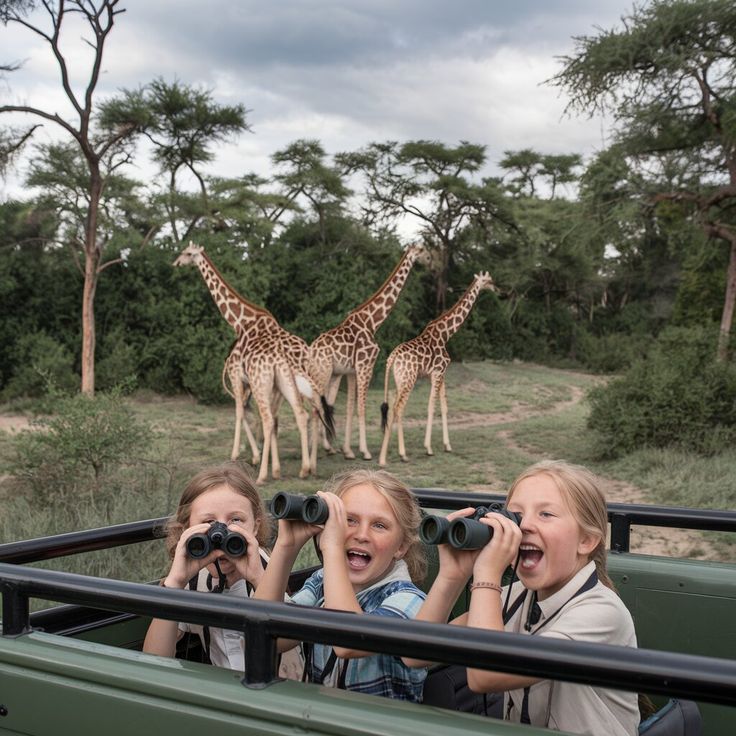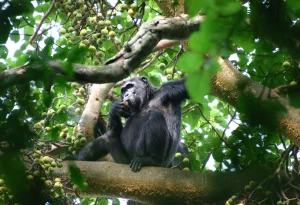Uganda, blessed with lush landscapes and extraordinary wildlife diversity, has emerged as an ideal destination for family safari tours. Parents seeking a holiday that blends adventure, education, and stunning natural beauty will find an immersive experience that far exceeds a typical vacation. This guide takes you through every step of planning an unforgettable family safari—from choosing the right parks to ensuring the safety and enjoyment of each family member. In the sections that follow, you’ll find a detailed roadmap for an enriching journey through the heart of Africa.
How Do We Ensure a Safari in Uganda is Safe for Our Family?
Family safety remains the top priority on any holiday, and a safari in Uganda is no exception. Professional rangers patrol the country’s national parks, maintaining secure environments. Reputable tour operators and safari lodges follow strict safety protocols to protect all visitors. The most important rule to teach children is to always listen to your guide. These experts understand wildlife behavior and the local environment, and they give instructions that keep both visitors and animals safe. During game drives, always stay inside the safari vehicle. Animals see the vehicle as a large, non-threatening object, but a human silhouette can provoke unpredictable or aggressive reactions. Keep all body parts—including hands, heads, and cameras—inside the vehicle at all times.
Safety for the Children
Furthermore, most safari camps and lodges are unfenced, meaning that wildlife can, and often does, wander through the premises. Children must be supervised at all times and should never be allowed to walk alone, especially after dark. Lodges employ staff to escort guests to their rooms in the evenings for this very reason. When staying at a lodge, it is crucial to familiarize your family with the specific rules regarding movement within the premises.
Noise levels should also be managed, as loud sounds and sudden movements can startle animals. Prior to your trip, it is highly advisable to consult a travel clinic at least six weeks in advance to discuss necessary vaccinations and malaria prevention for your family. A well-stocked first-aid kit with essentials like sunscreen, insect repellent, and any personal medications is a must-have for the trip. By following these clear guidelines, a family safari in Uganda can be a remarkably safe and rewarding experience.
What are the Best National Parks for a Family Safari in Uganda?
Uganda offers a range of national parks, each with a unique landscape and wildlife, and certain destinations are particularly well-suited for family tours due to their accessibility and diverse, child-friendly activities.
Queen Elizabeth National Park
An outstanding choice and is often recommended as the premier destination for families. Its location offers a manageable drive from Entebbe, minimizing travel time and making the journey less strenuous for children. The park is celebrated for its abundant wildlife, which includes elephants, buffalo, and the famous tree-climbing lions in the Ishasha sector. The single most engaging activity for families is the boat cruise along the Kazinga Channel. This provides a safe and stable platform to observe a phenomenal concentration of hippos, crocodiles, and a staggering variety of birdlife. The park also offers an exciting lion tracking experience for older children, providing a hands-on and educational component that goes beyond a standard game drive. This blend of classic safari viewing with unique experiential activities makes Queen Elizabeth National Park a truly dynamic and engaging family destination.
Lake Mburo National Park
excellent option for families with younger children or those seeking a more tranquil and active safari. As the closest park to Kampala, it significantly reduces travel time. One of its defining features is the absence of major predators like lions and leopards, which allows for unique, on-foot activities. Families can partake in guided walking safaris, mountain biking, or even horseback riding through the park, getting a completely different perspective on wildlife like zebras, giraffes, and various antelope species. The park’s smaller size and gentle terrain make it an unintimidating and perfect introduction to the African bush for toddlers and younger kids who might not have the patience for long game drives.
Murchison Falls National Park
Murchison Falls National Park, Uganda’s largest, delivers a thrilling safari for families with older children, typically aged seven and above. In this classic safari landscape, you can take extensive game drives to spot lions, elephants, giraffes, and more. The park’s crown jewel, Murchison Falls, offers an unforgettable highlight. A boat cruise to the falls’ base reveals a dramatic spectacle as the entire Nile River squeezes through a seven-meter gorge before plunging 43 meters. The sheer power and scale captivate children and adults alike. You can round off the adventure with a visit to Ziwa Rhino Sanctuary, where expert guides lead you on foot to track rhinos—completing your family’s “Big Five” experience.
Kibale National Park
Kibale National Park makes a fantastic choice for families with older children who love primates. Known as the “Primate Capital of the World,” it’s famous for its chimpanzee trekking. Children aged 12 and above can join this unforgettable experience and watch these highly intelligent primates in their natural habitat. Families with younger children can still enjoy Kibale through guided nature walks and exceptional birdwatching. Nearby, the Bigodi Wetland Sanctuary offers an accessible guided walk where families can spot a variety of monkeys and vibrant bird species.
What are the Best Safari Activities for Children of Different Ages?
Keeping children entertained and engaged is crucial for a successful family safari. Uganda offers a spectrum of activities tailored to different age groups and interests, ensuring that no one gets bored.
For toddlers and young children (3-6 years old)
Short, focused game drives in parks like Lake Mburo work perfectly for families. With no long distances or predators, the experience feels relaxed and comfortable. Boat safaris on the Kazinga Channel offer smooth rides and guarantee close-up views of hippos, crocodiles, and other wildlife. Back at the lodge, family-friendly accommodations often provide swimming pools and safe play areas where young children can unwind and burn off energy. Guided nature walks around the lodge introduce them to the smaller wonders of the bush, from colorful insects to vibrant birdlife.
For older children (7-12 years old)
At this age, children’s curiosity blossoms. You can make game drives more interactive with wildlife checklists or spotting challenges. Boat cruises on the Nile to Murchison Falls captivate young explorers with the roar of the cascading water and the surrounding wildlife. A guided, on-foot rhino tracking adventure at Ziwa Rhino Sanctuary thrills while teaching about conservation. Many lodges also arrange cultural visits to nearby villages, where children join in traditional dancing, try basket weaving, or visit local schools—creating meaningful cultural exchanges that stay with them long after the trip.
For teenagers (13+ years old)
Teenagers thrive on physically demanding, immersive adventures. From age 12, they can join chimpanzee trekking in Kibale National Park and marvel at the complexity of primate behavior. At 15 and above, they can tackle the pinnacle of a Ugandan safari—gorilla trekking in Bwindi Impenetrable or Mgahinga Gorilla National Park. This challenging yet profoundly rewarding journey offers a once-in-a-lifetime encounter with these magnificent creatures. Many also dive into mountain biking, hiking, and, for the truly adventurous, whitewater rafting on the Nile. Each activity keeps them fully engaged and deepens their connection with Uganda’s landscapes.
What Kind of Accommodations are Available for Families on a Safari in Uganda?
Uganda’s tourism infrastructure has developed significantly, and there is a wide range of family-friendly accommodations available, from mid-range lodges to luxury safari camps. When choosing a place to stay, families should look for properties that explicitly cater to children.
Lodges with Family Units: Many lodges offer dedicated family units or cottages with multiple bedrooms and shared living spaces. These provide a sense of privacy and comfort, allowing families to stay together. Examples include the family cottages at Murchison River Lodge or the family bandas at Kibale Forest Camp.
Amenities: Look for lodges that have child-friendly amenities, such as swimming pools, spacious grounds for playing, and even dedicated kids’ clubs or supervised activity programs. Mweya Safari Lodge in Queen Elizabeth National Park is known for its excellent facilities, including a large pool overlooking the Kazinga Channel.
Flexible Dining: Inquire about children’s menus and flexible meal times. Reputable lodges understand that children may have different dietary needs and eating schedules.
Trained Staff: A good family-friendly lodge will have staff and guides who are experienced and comfortable working with children, making the experience more enjoyable for everyone.
What is the Best Time to Travel for a Family Safari in Uganda?
Choosing the right time to visit is crucial for a family safari, as it can significantly impact the experience. Uganda’s climate is generally favorable year-round, but the two dry seasons are often considered the best for families.
The Dry Seasons (June to August & December to February)
These months bring warm, sunny weather and minimal rainfall. The dry conditions keep roads accessible, making travel between parks easier and more comfortable for children. With sparse vegetation, wildlife becomes easier to spot as animals gather around the few remaining water sources. Fewer mosquitoes during this time also lower the risk of malaria. However, the season draws the most visitors, so parks feel busier and you should book accommodations well in advance.
The Wet Seasons (March to May & September to November)
Many families choose the dry season for its easy travel and predictable weather, but Uganda’s wet seasons—March to May and September to November—offer their own compelling advantages. Known as the “green season,” these months see the rains transform the landscape, revitalizing parks with lush, vibrant greenery and replenishing water sources. Photographers find paradise here, as the rich backdrop contrasts beautifully with the wildlife and creates stunning, high-impact images. The clear air and soft, golden light make this an ideal time to capture unforgettable family photos.
Is a Family Safari in Uganda the Right Choice for Us?
A family safari in Uganda delivers more than a vacation—it takes you on an extraordinary journey that blends excitement, education, and relaxation for everyone. You can spot diverse and abundant wildlife in Queen Elizabeth National Park, feel the breathtaking power of Murchison Falls, and track rhinos on foot at Ziwa Rhino Sanctuary. Uganda offers experiences that spark adventure in children and rekindle a passion for the natural world in adults.
When you plan carefully, follow the safety guidelines from expert guides, and choose activities and accommodations that fit your family’s needs and preferences, you embark on an adventure that creates a treasure trove of shared memories and fosters a lifelong appreciation for nature.




